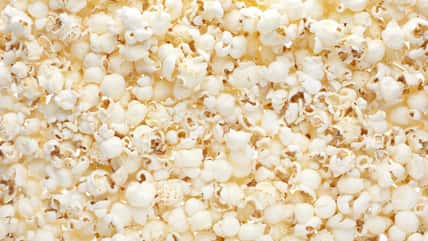Under The Floorboards Of This Institution Were Hidden Clues About What The 19-Century Women There Ate

Between 1817 and 1819, the Hyde Park Barracks in Sydney was built to house male convicts. After convicts stopped being transported to New South Wales, the Hyde Park Barracks served as the Female Immigration Depot from 1848 to 1887 and the Female Destitute Asylum from 1862 to 1886.
The depot housed unmarried women and girls who arrived in New South Wales on subsidized tickets. The asylum was meant for women who were unable to support themselves due to age, disability, or illness.
According to official records, the women who stayed at the institutions ate a bland diet of bread, tea, and meat that was either roasted or boiled in soup. However, new research shows something quite different.
Beneath the floorboards of the upstairs dormitories, dried plant materials were found, suggesting that the inhabitants ate fresh fruit, vegetables, nuts, and spices.
At the Female Immigration Depot and the Female Destitute Asylum, the women and girls were offered a safe place to live and three meals a day.
But they were closely supervised by a matron and were bound to strict rules. To keep the institutions running, they had to do most of the cooking and cleaning.
Official records, government reports, and eyewitness accounts all stated that the meals were dull and lacked variety.
For breakfast and supper, bread and tea were served. For lunch, there was more bread and a soup of boiled meat and vegetables.
On special occasions, like Christmas, the meat might be roasted and served with puddings, fresh fruit, and extra tobacco. But that does not explain how thousands of nut shells and fruit seeds were found under the floorboards.

Sign up for Chip Chick’s newsletter and get stories like this delivered to your inbox.
During the 1980s, archaeologists excavated parts of the courtyard and inside the building. The floorboards on the second and third floors were being renovated, which was when tens of thousands of objects were discovered from beneath the floorboards.
At the time, the plant remains were not investigated thoroughly. They were kept in the Hyde Park Barracks museum collection.
Now, a new analysis of the dried plant remains has revealed that women who stayed in these institutions supplemented the monotonous meals they were served.
They could have picked fresh peaches on the way back from church or purchased peanuts from peddlers. This was most likely the only way they could express their personal preferences and build relationships.
The most common items that were found included pits from stone fruits like peaches or nectarines, cherries, plums, and apricots. There was also evidence of apples or pears, dates, grapes, hazelnuts, walnuts, and citrus fruit.
To the British migrants, other foods introduced from the Pacific, South America, and Southeast Asia, such as Brazil nuts, lychees, and coconuts, would have been more unfamiliar.
In addition, there was pumpkin, corn, and chili pepper, originally from the Americas. All of these crops highlighted how Australia was part of extensive global networks.
One of the women who stayed at Hyde Park Barracks placed a beautifully preserved rose under the floorboards for safekeeping.
Citrus peels and seeds were hidden away to erase all evidence of a secret snack. Someone also apparently liked to spice up their meals due to the discovery of a whole chili pepper.
Overall, these are the small glimpses we get into the lives of institutionalized women in Sydney 150 years ago. The study was published in the journal Antiquity.
More About:News





